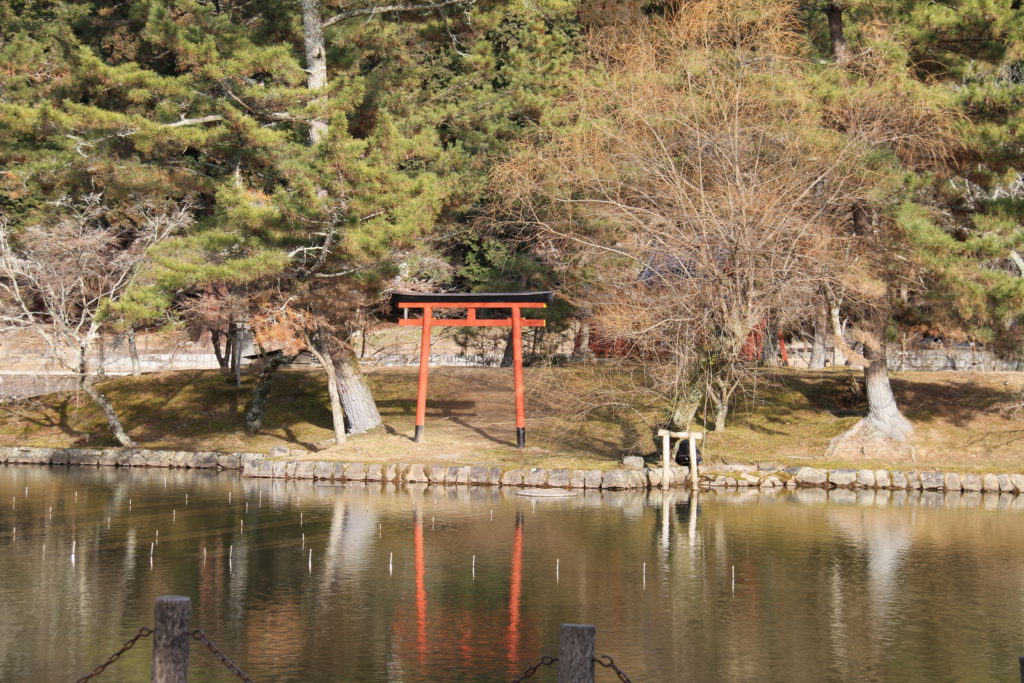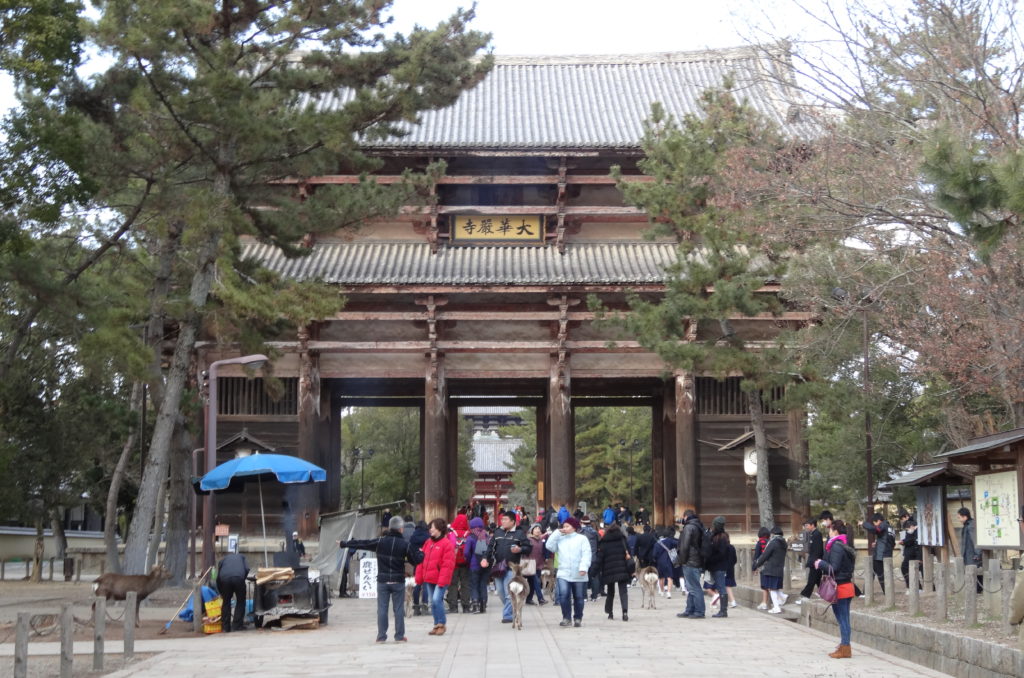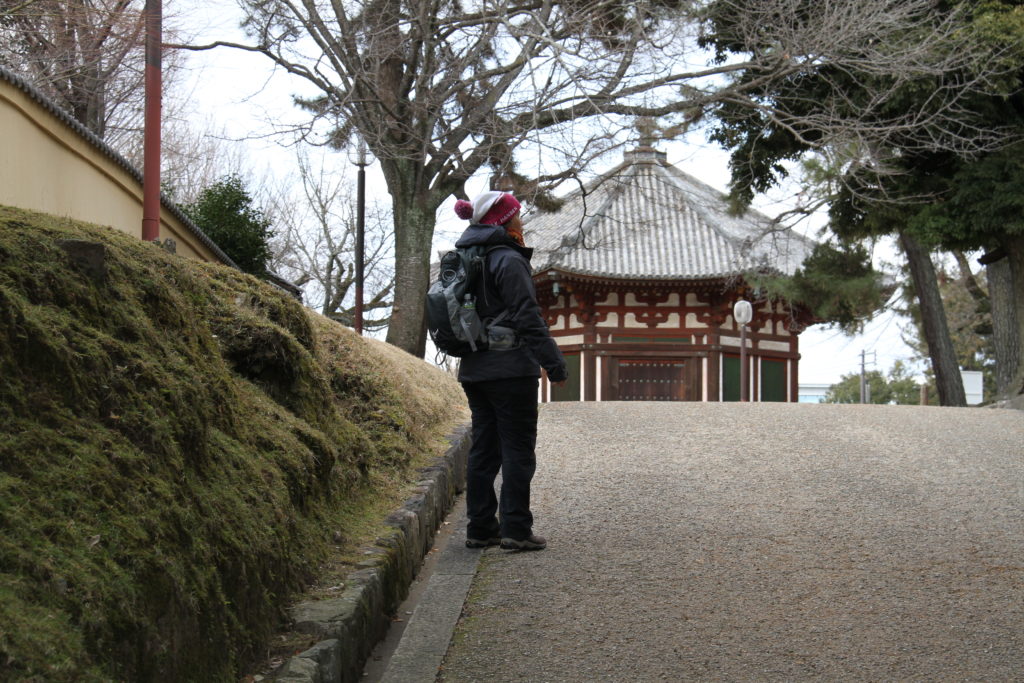Travel period Feb 2014
The Ancient Capital of Japan
A historical treasure and home to some of Japan’s oldest temples, Nara is an incredibly easy day trip from Osaka, with Nara’s highlights being easily accomplish-able in that span of time. We visited Nara as a day trip from Osaka, taking about 50 minutes by JR Yamatoji Line.
Nara has two main stations; Nara Station (JR Line) and Kintetsu Nara Station (Kintetsu Line). Once you’re in Nara, you’ll be able to get around on foot very easily. City buses are available, but the main area you’ll be exploring is compact, and does require too much walking, and allows you to get a feel for the city’s atmosphere. I recommend heading to Nara Park once you exit the train station, because most of the attractions, including five of the eight UNESCO World Sites, are located near Nara Park.
About Nara

Nara is part of the Kansai region, and is conveniently located near Osaka and Kyoto. Nara was once the capital city of Japan from 710 to 794 and is the capital city in Nara Prefecture. In Nara Prefecture, we experienced the unique opportunity to delve into Japan’s most ancient past. It is second only to Kyoto in its wealth of temples, shrines, and traditional gardens.
Apart from its cultural sites, Nara is best known for its parks with tame Sika deer. They are very comfortable being around people, so don’t be surprised if they gently nudge, bow their heads to you, or tug at loose ends of your clothing.
We started our day of sightseeing by stepping off the JR station in Nara, and taking the main Sanjo Dori street heading to the Nara Park. First up…
Kofukuji Temple

About twenty minutes’ walk from the JR Nara Station is Kofukuji Temple. It is a huge temple compound that contains a towering pagoda, that we spotted on our right, as we made our way up Noborioji Street on the way to Nara-koen Park. While the treasure hall at Kofukuji does contain some interesting Buddhist images, this is a relatively quick and superficial stop and its main areas are free to visit.

Kofukuji Temple is one of the 8 Historic Ancient Monuments of Nara inscribed as a UNESCO World Heritage Site. This Buddhist temple, founded in the 7th century, that was actually transferred from Kyoto, was one of the Seven Great Temples of Nara. It is said that the original temple complex housed 175 buildings, but war and fires left only 12 buildings standing.
Kofukuji temple is the guardian temple of the Fujiwara clan. It has two pagodas, the taller one – the five storied pagoda is dubbed as the second tallest pagoda in Japan and is the symbol of Nara.
Opening Hours for Eastern Golden Hall: Daily 09:00 – 17:00 (last admission at 16:45)
Admission Fee: JPY 300
Nara-koen Park

Next to Kofukuji Temple and sitting at the foot of Mt. Wakakusa is Nara Park. Nara Park is one of oldest parks in Japan founded sometime in 1880. The park has an expanse of trees and open spaces that extends east from Downtown Nara and Naramachi, running all the way to the base of the hills, that rise east of the city.
Nara Park is not so much a sight by itself, but a place that contains many other important sights, including Todai-ji Temple, Isui-en Garden and Kasuga-Taisha Shrine.

The Park is lined with pleasant pathways, dotted with ponds, has become home to a thousand free-roaming deer, that is the symbol of Nara City and classified as a Natural Treasure. We seriously couldn’t believe our eyes, ranging freely through the innermost temple district were thousands of tame deer.

The deer in Nara were once considered sacred and protected, as they are believed to be messengers of the gods in Shinto religion. Based on folklore, this started when Takemikazuchi-no-mikoto, one of the four gods of Kasuga Shrine, arrived on Mt. Mikasa riding a white deer. There was a time when killing the deer in Nara was punishable.
Nara Park can be visited all year round and is FREE of charge.
Todaiji Temple

From the park we walked for about twenty minutes to Todaiji Temple, Home of the famous Daibutsu (Great Buddha). Todaiji is a monumental Buddhist temple complex. It was built in 8th century, giving it not only a far-reaching history but also prompting it to be recognized as a World Heritage Site.
The ancient temple was a reconstruction dating back to 1709 AD, that is 30 percent smaller than the original. Even in that state, it held the title of the largest wooden building in the world until 1998.

The focal point of Todai-ji is the Daibutsu-den (Hall of the Great Buddha), that contains the vast grandeur of the Daibutsu; the biggest bronze Buddha in the world.
The 15 meter tall, seated Buddha, represents Vairocana and is flanked by two Bodhisattvas. Several smaller Buddhist statues and models of the former and current buildings are also on display in the Daibutsuden Hall.
Another popular attraction was a pillar with a hole in its base that was the same size as the Daibutsu’s nostril. It is said that those who can squeeze through this hole will be granted enlightenment in their next life.

Along the approach to Todaiji stands the Nandaimon Gate, a large wooden gate watched over by two fierce looking statues. Representing the Nio Guardian Kings, the statues are designated national treasures together with the gate itself.
(The Nara Daibutsu is one of two of its kind in Japan. The other one, slightly smaller and from the 13th century, is located in Kamakura)
Opening Hours: Daily 08:00 – 17:00 (until 16:30 from November to February)
Admission Fee: JPY 500
Kasuga Taisha Shrine

Our next stop was Kasuga Taisha Shrine, that is situated at the foot of a verdant mountain, fringed by lanterns that were donated by worshipers. Hundreds of bronze lanterns can be found hanging from the buildings, as well as many stone lanterns lining its approaches.
It is dubbed Nara’s most important shrine, since it is dedicated to the guardian deity of Nara City. Kasuga Taisha Shrine was established in the 8th century by the Fujiwara family, Japan’s most powerful family clan during most of the Nara and Heian Periods.
While the outer shrine can be visited free of charge, there is an admission fee to enter the inner shrine, that provides a closer view of the shrine’s inner buildings. Further in was the main sanctuary, containing multiple shrine buildings that displayed the distinctive Kasuga style of shrine architecture. This is characterized by a sloping roof extending over the front of the building.

A short walk from the Kasuga Shrine main complex was the Kasuga Taisha Shinen Manyo Botanical Garden, that was closed during our visit. The shrine grounds also contain the Kasuga Taisha Museum, a treasure hall near the main complex that displayed some of the shrine’s relics.
Kasuga Taisha Shrine
Opening Hours: Daily 06:30 – 17:00 (Inner area 08:30 – 16:00)
Admission Fee: Free (outer area), JPY 500 (inner area)
Kasuga Taisha Museum
Opening Hours: Daily 10:00 – 17:00 (entry until 16:30)
Admission Fee: JPY 500
Botanical Garden
Opening Hours: 09:00 – 17:00 (until 16:30 from December to February); admission ends 30 minutes before closing.
Closed on Monday from December to February (or following day if Monday is a holiday)
Admission Fee: JPY 500

We enjoyed our day in Nara and if you ever happen to be in Japan with a day or two spare on your hands, we’d definitely recommend a visit. We visited a few places in Nara but we missed a lot more. We didn’t get to Isuien garden, that is supposed to be an attractive Japanese garden with a variety of features. We also missed out on a Horyuji Temple, that is one of the country’s oldest temples and contains the world’s oldest surviving wooden structures. Of the traditional old houses and former merchant districts, we missed the Naramachi that would have been interesting. But they’ll have to wait for another day and another post – watch this space!
Note: The information provided in this post was correct at time of publishing but may change. For final clarification please check with the relevant service.

